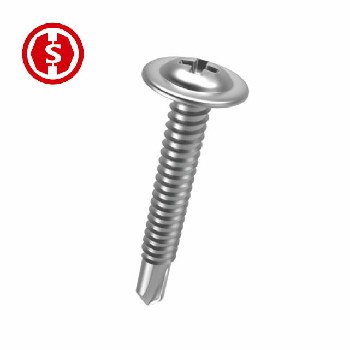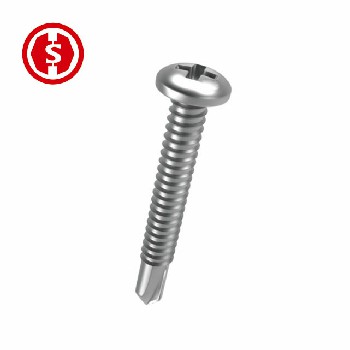

When it comes to metals, there are various grades that serve different purposes across industries. One such widely used metal grade is 304 stainless steel. In this article, we will delve into the meaning and significance of 304 metal, its properties, applications, and how it differs from other stainless steel grades.
Understanding Metal Grades:
Metal grades are specific categorizations of metals based on their chemical composition and physical properties. They help in distinguishing one metal from another and determine its suitability for various applications.
The Significance of 304 Metal Grade:
Grade 304 stainless steel, often referred to as 304 metal, is one of the most versatile and commonly used stainless steel grades. It contains chromium and nickel, which provide excellent corrosion resistance and make it ideal for various industrial and domestic applications.
Properties of 304 Stainless Steel:
Let's explore some of the key properties that make 304 stainless steel stand out:
Corrosion Resistance:
One of the most remarkable features of 304 metal is its exceptional corrosion resistance. It can withstand exposure to various environmental factors, making it suitable for outdoor and marine applications.
Strength and Durability:
304 stainless steel is known for its high strength and durability, making it a reliable choice for structural components and heavy-duty equipment.
High-Temperature Resistance:
Another advantage of 304 metal is its ability to perform well under elevated temperatures, making it suitable for applications in extreme environments.
Ease of Fabrication:
304 metal is easy to work with, allowing for various fabrication processes such as welding, machining, and forming.
The versatility of 304 metal makes it an indispensable material in many industries. Some of its common applications include:
Construction and Architecture:
304 stainless steel finds extensive use in construction for structural elements, handrails, and decorative finishes due to its excellent combination of strength and aesthetics.
Food and Beverage Industry:
Its corrosion resistance and ease of cleaning make 304 metal the preferred choice for food processing equipment and storage containers.
Medical Equipment:
304 stainless steel's biocompatibility and resistance to corrosion in bodily fluids make it ideal for medical instruments and implants.
Automotive Industry:
Many automotive components, such as exhaust systems and trim, are made from 304 metal due to its durability and resistance to environmental elements.
Aerospace Sector:
In the aerospace industry, 304 stainless steel is utilized for various aircraft components that require high strength and resistance to harsh conditions.

While 304 metal is popular, it's essential to understand its differences from other stainless steel grades, such as:
304 vs. 316 Stainless Steel:
Both 304 and 316 stainless steel offer excellent corrosion resistance, but 316 contains molybdenum, making it more suitable for highly corrosive environments.
304 vs. 201 Stainless Steel:
304 metal provides better corrosion resistance than 201 stainless steel, making it a more reliable choice for long-term use.
304 vs. 430 Stainless Steel:
304 stainless steel has higher nickel content than 430, resulting in better corrosion resistance and durability.
Factors Affecting the Cost of 304 Stainless Steel:

Raw Material Costs:
Fluctuations in the prices of raw materials, such as nickel and chromium, directly impact the cost of 304 stainless steel.
Manufacturing Processes:
The complexity of manufacturing processes and the required quality standards can affect the final cost of 304 metal products.
Market Demand and Supply:
Changes in market demand and supply can also influence the pricing of 304 stainless steel.
Care and Maintenance of 304 Stainless Steel:
To ensure the longevity of 304 metal products, proper care and maintenance are essential:
Cleaning and Sanitizing:
Regular cleaning and sanitization help prevent the buildup of contaminants on the surface of 304 metal.
Avoiding Contamination:
Avoid exposing 304 stainless steel to chlorides and other corrosive agents that can cause pitting corrosion.
Dealing with Corrosion:
In case of corrosion, prompt action is necessary to prevent further damage. Proper cleaning and polishing can help restore the appearance of 304 metal.
Sustainability and Recyclability of 304 Stainless Steel:
As environmental concerns grow, 304 stainless steel's recyclability becomes crucial. Stainless steel can be recycled and reused, making it a sustainable choice.
Shandong Shenghang Technology Co., Ltd. takes scientific and technological R &D as the guide and is committed to the R &D, production, sales and service of environmental protection and energy-saving products.
The Importance of Metal Roof Anchors for Fall Protection
2023-04-27residential roof anchor
2022-11-24What is the principle of hardening reaction of fire rated roof tile
2021-12-10Understanding the Importance of Permanent Roof Anchors for Safety and Compliance
2023-06-02
Tel: + 0086 15076176199 + 0086 311-87880324
No.3 Mingdu International Building,
Economic and Technological Development
Zone, Linyi
Shandong China
Shandong Shenghang TECHNOLOGY CO.,Ltd